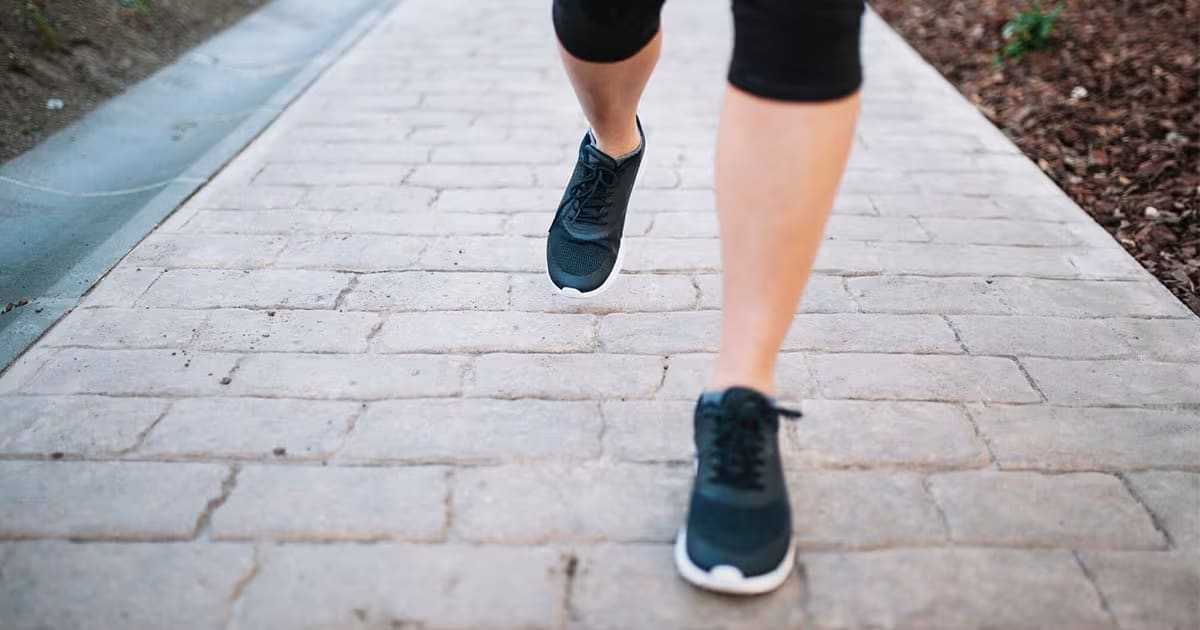In a world where high-intensity workouts, gym memberships, and advanced fitness gadgets are all the rage, walking often gets overlooked as a form of exercise. Yet, walking is one of the simplest, most accessible, and most effective ways to improve physical and mental health.
It doesn’t require special equipment or a specific skill set and can fit into almost any lifestyle or fitness level. Whether you're just starting your fitness journey or looking for a sustainable way to stay active, walking can be a powerful tool.
In this article, we’ll explore the benefits of walking for exercise, why it's so beneficial, how it impacts our bodies and minds, and how to make the most of a daily walking routine. By the end, you’ll have all the inspiration you need to lace up your sneakers and take that first step.
Why Walking?
Walking might seem too simple to be effective, especially compared to high-energy workouts like running or spin classes. But there's a certain magic to walking: it's low-impact, easy on the joints, and gentle enough to fit into your daily life without requiring a lot of recovery. Most importantly, it’s accessible to nearly everyone, regardless of fitness level, age, or physical ability.
Walking as an exercise isn’t about reaching a specific heart rate or sweating profusely; it’s about consistency, enjoyment, and the myriad ways that moving our bodies can benefit our health. Here’s why walking deserves more attention as a form of exercise:
- It’s Free: No membership fees, no equipment, no need to carve out time to go somewhere special. You can start right outside your front door.
- Low Injury Risk: Walking puts less strain on your body than many other forms of exercise, making it a safe option for beginners or those with joint issues.
- Mental Health Boost: Studies show that walking improves mood, reduces stress, and boosts mental clarity, making it as much an exercise for the mind as it is for the body.
- Social Flexibility: You can walk alone or with a friend, with family, or even with your dog. It’s an activity that can bring people together or give you precious alone time.
Health Benefits of Walking
The physical and mental benefits of walking are numerous, and they touch almost every part of our health.
1. Heart Health and Longevity
Walking is great for heart health. Regular walking helps lower blood pressure, reduce bad cholesterol (LDL), and increase good cholesterol (HDL), which supports overall cardiovascular health. Studies show that even moderate walking can reduce the risk of heart disease, which remains a leading cause of death worldwide.
What’s more, regular walking has been linked to a longer life. One study found that people who walked briskly for 30 minutes a day lived longer than those who didn’t. In essence, walking every day is like giving your heart and lungs a gentle workout that improves your overall endurance and increases your lifespan.
2. Weight Management and Metabolism
Walking can be a useful tool for weight management and fat loss. Although it may not burn as many calories per minute as intense cardio, walking has its advantages because of its low intensity. Walking for longer periods (especially at a brisk pace) can tap into fat stores and help regulate blood sugar levels, making it a great option for sustainable weight loss or maintenance.
Another benefit is the “afterburn” effect, known as Excess Post-Exercise Oxygen Consumption (EPOC), which means that even after your walk, your body continues to burn calories as it recovers.
3. Joint Health and Mobility
Walking is a low-impact exercise, meaning it’s gentle on the joints and less likely to cause injury compared to high-impact activities. For people with arthritis or joint pain, regular walks can reduce stiffness and improve mobility.
One of the best ways to protect your joints is to strengthen the muscles around them, and walking does just that. By engaging your legs, hips, and core muscles, walking builds strength and stability that supports your joints, making it easier to stay active as you age.
4. Mental Health Benefits: Reducing Stress, Anxiety, and Depression
Walking has a profound effect on mental health. When we walk, our bodies release endorphins—chemicals that act as natural mood lifters. Walking outdoors, especially in nature, can amplify these effects even further. Studies show that being in nature can lower cortisol (the body’s stress hormone), helping to reduce anxiety and boost mood.
Furthermore, walking provides a structured way to clear your mind, process thoughts, and connect with your surroundings. It can improve mental clarity, and focus, and even spark creativity. A walk can serve as a mental reset, helping you return to your day with fresh energy and perspective.
5. Improved Sleep Quality
If you struggle with insomnia or restless nights, adding a daily walk to your routine might help. Physical activity can improve the quality of sleep, helping you fall asleep faster and enjoy a deeper, more restorative rest. Walking during daylight hours also helps regulate your body’s internal clock (circadian rhythm), signalling to your body when it’s time to be awake and when it’s time to rest.
How to Get Started with a Walking Routine
Starting a walking routine is as simple as putting on comfortable shoes and stepping outside. However, a few tips can make the experience more enjoyable and beneficial.
1. Start Slowly and Build Up
If you’re new to regular exercise, begin with short, manageable walks. Start with 10-15 minutes and gradually increase the duration by 5 minutes each week. Aim to work up to at least 30 minutes of brisk walking most days of the week.
2. Set a Pace That Works for You
A “brisk” pace means walking fast enough to raise your heart rate and make you feel slightly out of breath but still able to carry on a conversation. For most people, this is about 3-4 miles per hour. Listen to your body, and remember that any pace is a good pace if you’re moving.
3. Choose the Right Footwear
Supportive, comfortable shoes are essential for a good walking experience. Choose shoes with proper arch support, cushioning, and a good fit to avoid discomfort or injury. Specialized walking or running shoes are ideal, but any pair that supports your foot and feels good will work.
4. Make It Enjoyable
Walking should be something you look forward to, not a chore. Consider walking in places that bring you joy—like a local park, along the beach, or around your neighbourhood. Listen to music, podcasts, or audiobooks, or simply enjoy the sounds of nature. Walking with a friend can also make time pass quickly and add a social dimension to your routine.
5. Add Variety with Intervals
Once you’ve built a regular walking routine, consider adding intervals to increase the challenge. You can walk at a brisk pace for a few minutes, then slow down for a minute to recover, and repeat. Intervals not only increase calorie burn but also improve cardiovascular fitness over time.
Walking for Different Goals: Weight Loss, Stress Relief, and Beyond
1. Walking for Weight Loss
If weight loss is your primary goal, consistency is key. Aim for at least 300 minutes of moderate walking each week (about 1 hour per day, 5 days a week). Combine walking with a balanced diet rich in whole foods to achieve sustainable results. For added benefit, try power walking or using light hand weights for a bit more intensity.
2. Walking for Stress Relief and Mental Clarity
To maximize the mental health benefits, try “mindful walking.” This involves paying close attention to your surroundings, your breath, and the sensations in your body as you move. Walking in nature, especially, can help soothe anxiety and clear your mind.
3. Walking for Strength and Endurance
If you want to build strength and endurance, consider challenging yourself with hilly terrain or varying your route to include some inclines. This adds resistance, making your legs and core work harder and building strength over time.
The Social and Emotional Side of Walking
One of the beautiful things about walking is its ability to connect us to others and ourselves. Whether you’re walking with family, friends, or even a pet, walking can bring a sense of community and shared experience. It’s also a wonderful way to spend time alone, offering a chance to think, reflect, or simply unwind.
Walking can also serve as a regular ritual—a time to pause and reconnect with the present moment. In today’s fast-paced world, we often overlook the importance of slowing down. Walking brings us back to our own rhythm, helping us to appreciate the simplicity of movement, the beauty of our surroundings, and the joy of being alive.
Making Walking a Habit:
The most challenging part of any exercise routine is sticking with it. Here are some strategies to make walking a habit you can enjoy for a lifetime:
- Set Small, Achievable Goals: Start with a realistic goal, like walking for 10 minutes a day, and gradually increase as you feel more comfortable.
- Track Your Progress: Use a fitness tracker, app, or simple journal to log your walks. Seeing your progress over time can be motivating and rewarding.
- Celebrate Small Wins: Every step counts! Celebrate your accomplishments, no matter how small, and recognize the positive changes you’re making in your life.
- Stay Flexible: Don’t worry if you miss a day. Walking should be a positive part of your life, not a source of stress. Simply get back to it the next day.
Walking is more than just exercise—it’s a way of connecting with yourself, enjoying the world around you, and nurturing both body and mind. It’s a practice that fits seamlessly into daily life, adapts to all levels of fitness, and offers endless benefits for health and happiness.
So, take that first step. Whether it’s a slow morning stroll or a brisk walk after dinner, every step you take is a step toward a healthier, happier you. Walking reminds us that fitness doesn’t have to be extreme; it can be as simple as putting one foot in front of the other. So lace up your shoes, open your door, and let the journey begin.























